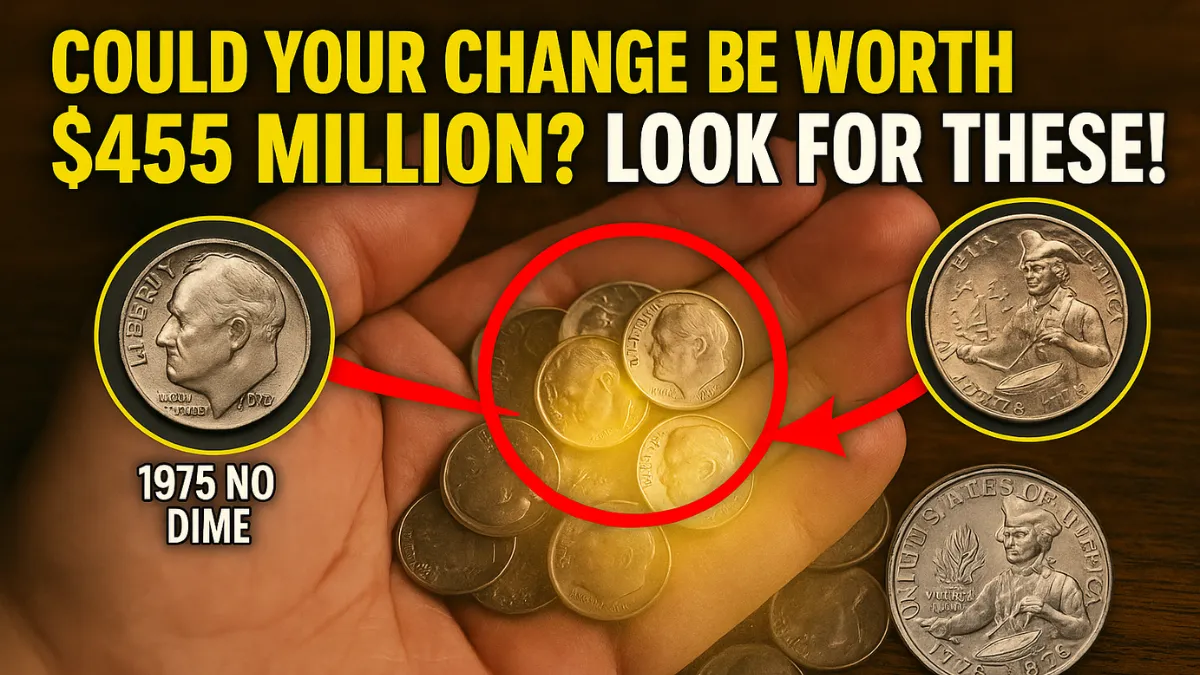Hidden Treasures in Your Pocket: Rare Coins Worth $455 Million
What if the spare change in your wallet could make you rich? It might sound too good to be true, but five rare dimes and Bicentennial quarters—together worth around $455 million—could still be hiding in everyday circulation. These valuable coins may look ordinary, but small details like minting mistakes or rare features make them incredibly special. You could find one in a coin jar, vending machine, or even as change from your coffee shop.
Let’s explore what makes these coins so valuable—and how you can spot one.
Why These Coins Are So Valuable
Some coins are worth a fortune because of errors made during the minting process—like missing mint marks or design mistakes. Others are rare because only a few were ever made. Some coins were even struck using silver instead of the usual metal, which adds to their worth.
The 1976 Bicentennial quarters, made to honor 200 years of U.S. independence, include some error versions or silver-clad types that collectors love. Similarly, Roosevelt dimes from 1968, 1970, and 1975, especially ones missing their mint marks, are extremely rare and in high demand.
These coins are more than just money—they are tiny pieces of history shaped by accident, change, and craftsmanship.
The Top 5 Rare Coins to Watch For
Here are the five rare coins that collectors are searching for—some of which are worth millions:
| Coin | Key Feature | Estimated Value |
|---|---|---|
| 1894-S Barber Dime | Only 24 were ever made | Worth millions |
| 1975 No-S Roosevelt Dime | Missing the “S” mint mark (only two known) | Up to $349,600 |
| 1968 No-S Roosevelt Dime | Also missing “S” mint mark | $45,000–$100,000 |
| 1970-S Roosevelt Dime | Doubled die error on the design | Up to $19 million |
| 1976 Bicentennial Quarter | Has errors or was struck on a dime blank | $9,200 to $45 million |
These coins are very rare, but believe it or not, they could still be found in regular pocket change.
How to Spot These Rare Coins
Finding one of these coins takes a sharp eye and some patience. Here’s how to check:
- Look at the year and mint mark: This is usually a small letter (like “S” or “D”) near the date.
- No mint mark? If a 1968 or 1975 dime is missing the “S,” it might be valuable.
- Check for doubled designs: Some 1976 quarters have text or numbers that look blurry or doubled. Use a magnifying glass to spot these details.
- Check the weight and color: A 1976 quarter struck on a dime blank may feel lighter or look silver-toned. Rare silver-clad quarters will look different from normal copper ones.
If you think you’ve found something unusual, don’t rush to spend it. Have it checked by a coin expert.
Watch Out for Fakes and Altered Coins
Looking for rare coins can be fun, but be careful—there are lots of fakes out there. Some people alter coins to make them look like rare versions. Here’s how to stay safe:
- Don’t clean the coin: Cleaning can damage it and reduce its value.
- Get a professional opinion: If you think you have a rare coin, send it to a trusted grading service like PCGS or NGC. They can tell if it’s real and how much it’s worth.
- Avoid sketchy sellers: If you’re buying coins, only deal with reputable dealers or well-known auction sites.
Taking these steps can help you avoid scams and protect your valuable find.
Ready to Start Your Treasure Hunt?
The idea of finding a $19 million dime or a $45 million quarter in your pocket sounds like a dream—but it’s possible. These five rare coins—three valuable dimes and two types of Bicentennial quarters—are still out there. They may be sitting in your change jar, lost in an old drawer, or forgotten in a family coin collection.
Next time you receive coins at the store or clean out your piggy bank, take a moment to look closely. Even though your chances are slim, one lucky find could change your life.
So grab a magnifying glass and start searching—you never know when a small coin could lead to a big payday.
